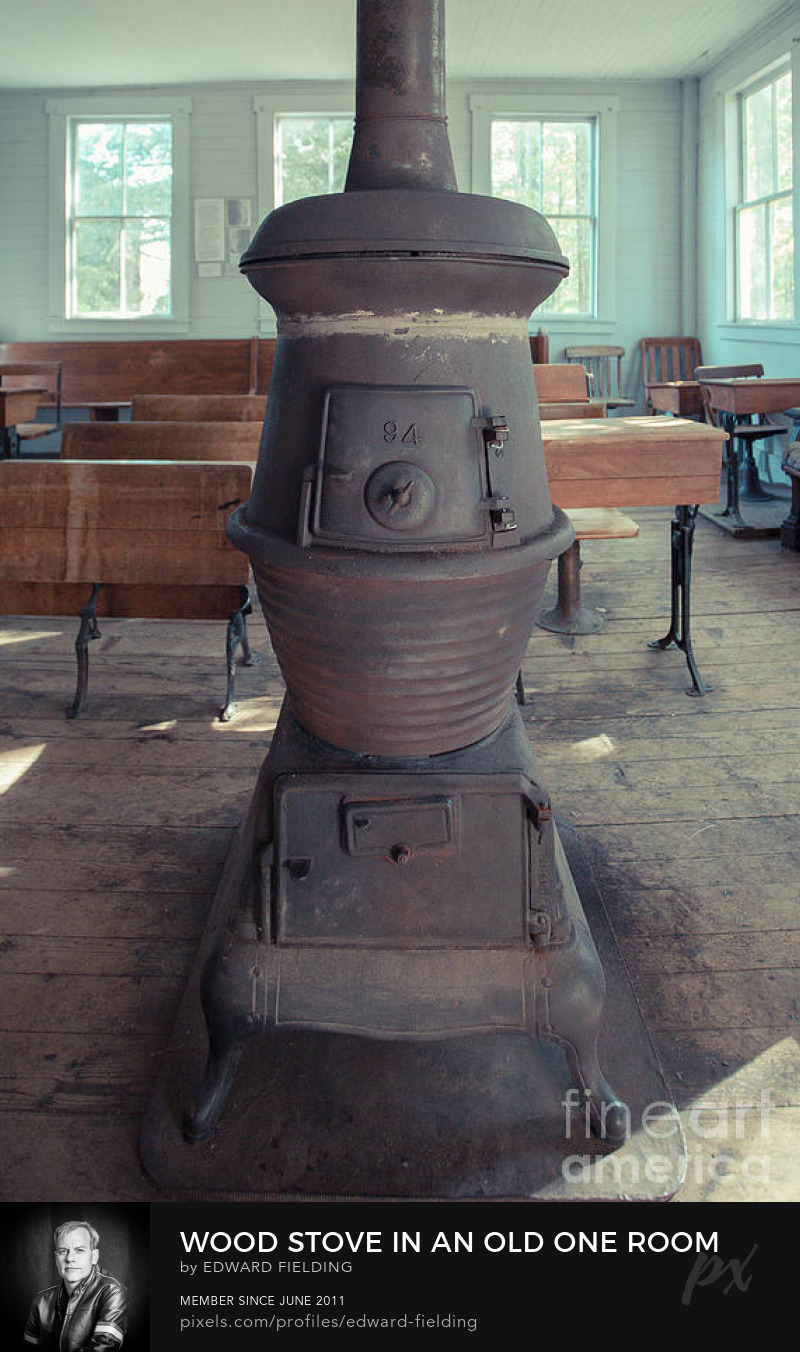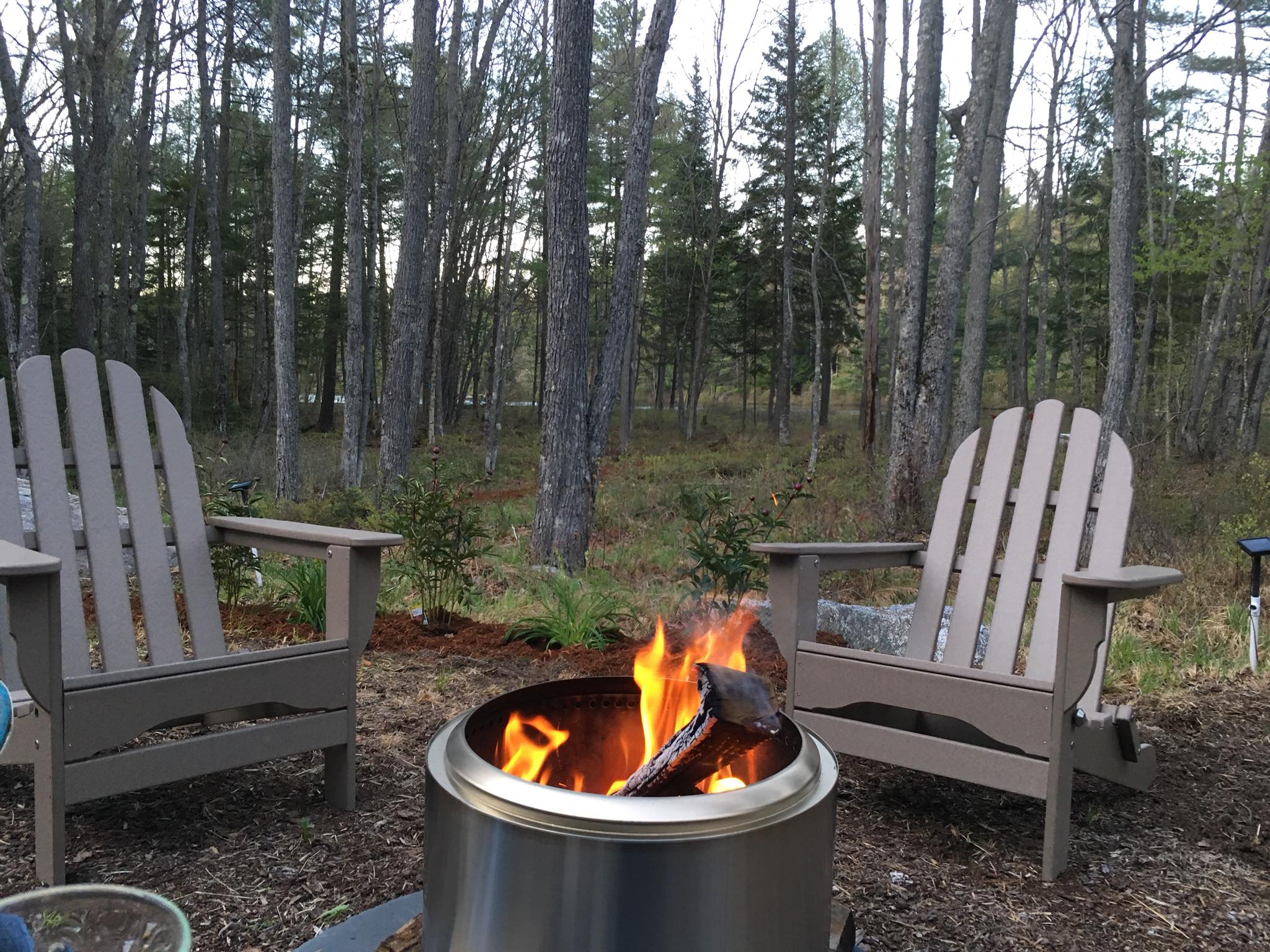The secret to a great fire is well-seasoned, dry firewood. And the secret to well-seasoned, dry firewood is proper storage.
Dry means it’s just not wet. I.e. Wood kept out of the rain and snow. Seasoned means it is dried through and through and is ready to burn.
Seasoned wood has a moisture content of under 20%. To check for seasoning wood should be freshly split and then the moisture content can be read by inserting the probes of a moisture meter.
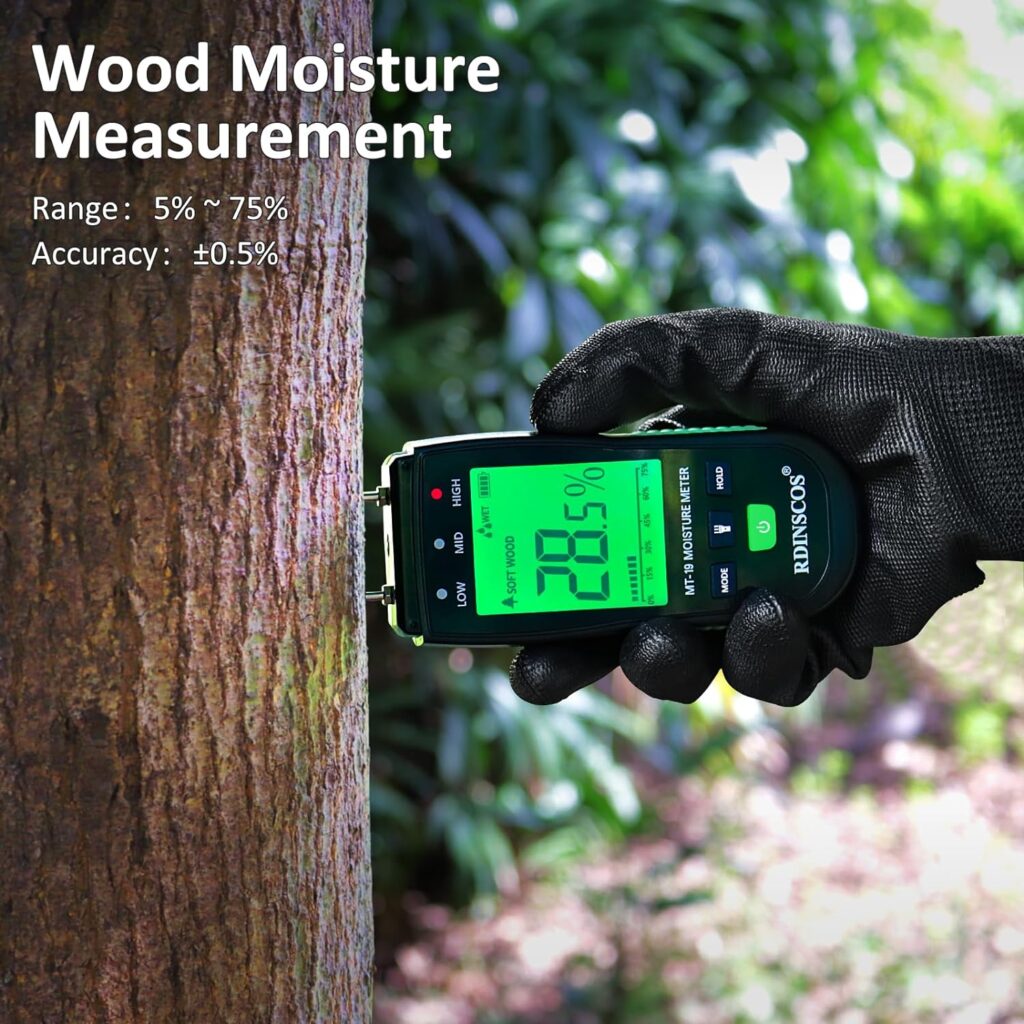
Sun, Wind and Low Humidity
The three elements of proper seasoning are sun, wind or airflow and low humidity. It’s less about keeping the wood “dry” and more about letting the wood open up and release moisture as it starts to decay and age.
I have a friend who moved his wood into his garage shortly after delivery. He kept his wood dry and out of the elements but it never seasoned.

Think about what dries out your lips. Sunburn, wind burn, a trip to the desert or sitting in a house in the winter time. The same elements work on wood.
Direct sunlight heats up the wood and makes it crack at the edges. These cracks allow water to escape. Wind and airflow move the moist air away from your wood pile. And the low humidity causes the wetter wood to equalize with the surrounding air.
Ever see a piece of paper curl up on a humid summer day? The dry paper absorbs moisture from the air. The opposite happens on a low humidity, dry day — the wood gives up moisture.
And once it’s gone from the inside of the wood, it stays gone. The outside layer might get wet from rain, but rain doesn’t penetrate into the middle of the split of firewood.
After losing it’s excess water, you’ll find that your firewood stack is about 10% smaller than when it was green. Firewood shrinks and often firewood stacks become unstable over time because of this.
A dry, well-seasoned piece of firewood will be much lighter than a green piece full of moisture. When you bang together two pieces of wet, green firewood, they sound dull. Two pieces of dry wood knocked together will have a more musical tone.
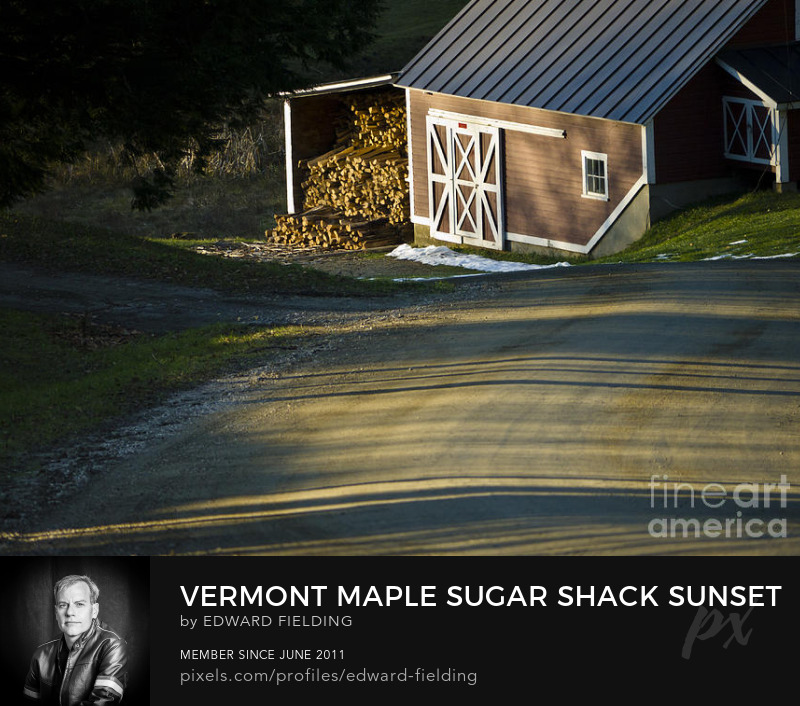
Best Time of Year to Season Wood
It’s convienent to get your firewood in the spring or summer but the best time for firewood to season is on cold, low humidity, howling wind days.
Wet rainy springs and humid summers are not going to season your firewood as well as bitter cold, dry as a bone, windy winter days.
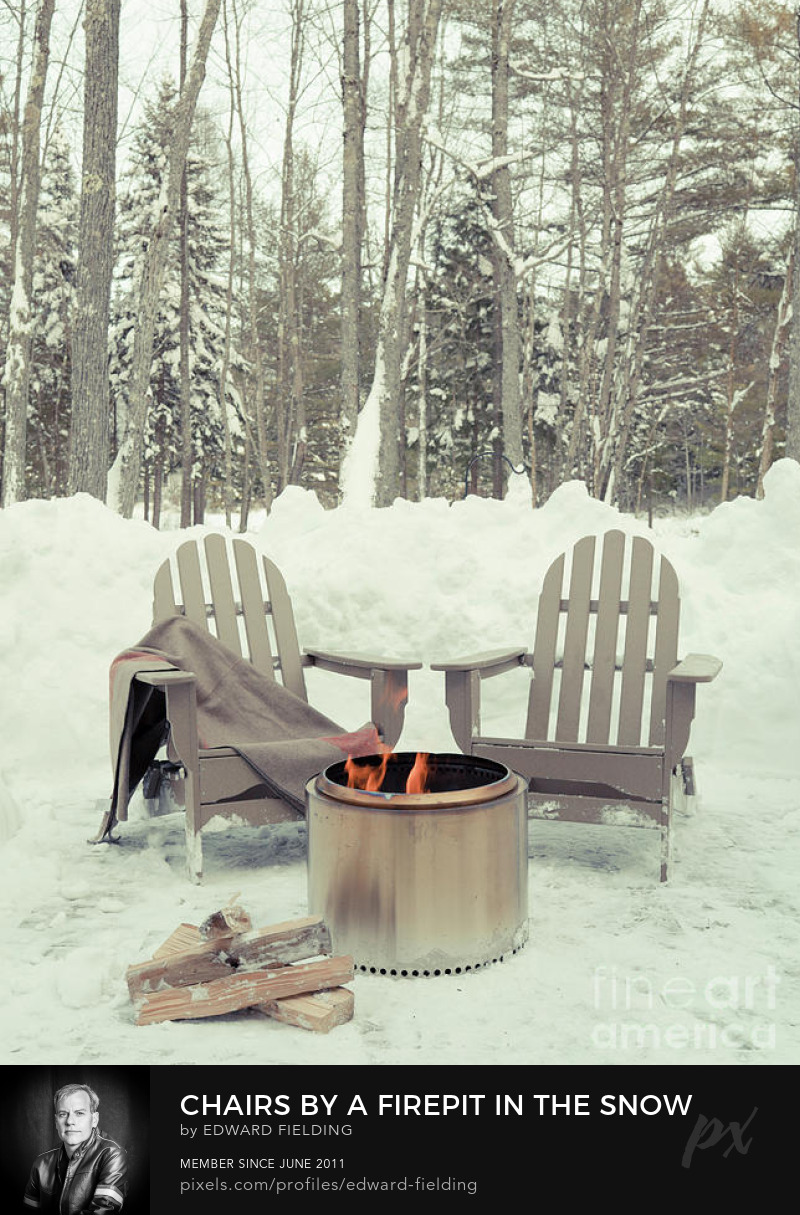
The Best Storage Solutions for Firewood Storage
The ideal storage solution for firewood would meet the following criteria:
- Located in a spot that gets maximum sun
- Not too close to the house or anything that blocks wind
- Single rows of wood to maximize airflow
- Covering on the top to keep off rain and snow
- Firewood is lifted off the ground
A popular and inexpensive way to acheive this is by stacking wood on pallets. Used wooden pallets used to ship materials around the country are typically available for free if you look around your area. When a few pieces break, the shipping company can not longer reuse them and they just want them gone.
But you have to have a truck or a trailer available to pick them up.
Another good way to stack firewood in rows inexpensively is to purchase brackets to make firewood racks using pressure treated 2×4 lumber.
In either case, ideally you will leave the wood uncovered to maximize exposure to sun and wind and then cover just the top to keep rain and snow off.
No need to cover the sides. Even if they get some rain on them, they will dry off quickly.
There are also ways to stack wood without racks such as the holz hausen or wood house sometimes called the Norweigen wood stack. Stacks like this are aestectially pleasing but really require a lot of uniform and thin pieces to stack well.
They look kind of a like a similar stack made to dry things, a haystack. Supposively this stack works like a chimney drawing moisture in and out the top.
There are some sellers who offer a top cover and a base for the round firewood stack. The base would help one start the first row to fit the cover size but I have my doubts. It seems like the the base would trap water and a properly crafted round firewood stack is left open to the elements. The top layers are suppose to be angled to shed water like one of those metal silos you see on farms.
I think I’d build one on four pallets so there is a good separation between the ground and the first layer.
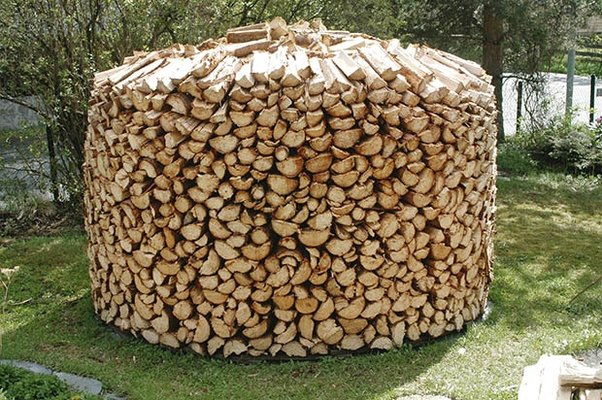
How NOT to Store Firewood
Once firewood is dry and seasoned, it can be stored in a shed, garage or brought into the house – as long as you aren’t bringing in insects.
Until then don’t wrapped it up in a tarp, let it sit on the ground or get rained and snowed on.
My friends other mistake in the past was having a load of wood delivered in a pile on his paved driveway and then throwing a tarp of over it. It wasn’t directly on soil but the tarp trapped all the moisture, not only did his wood not season but it got moldy.
